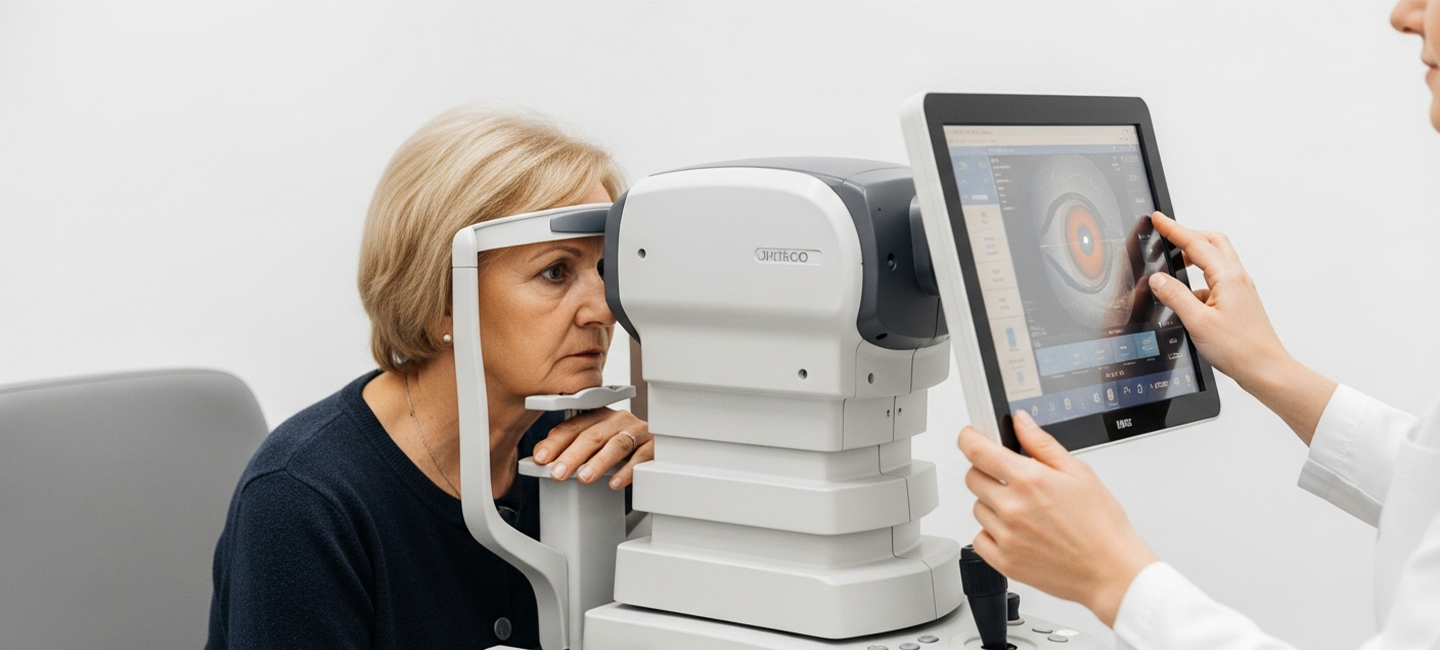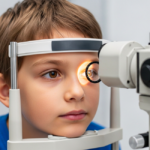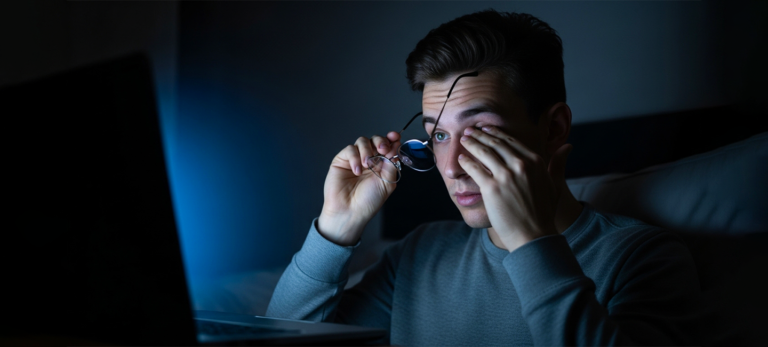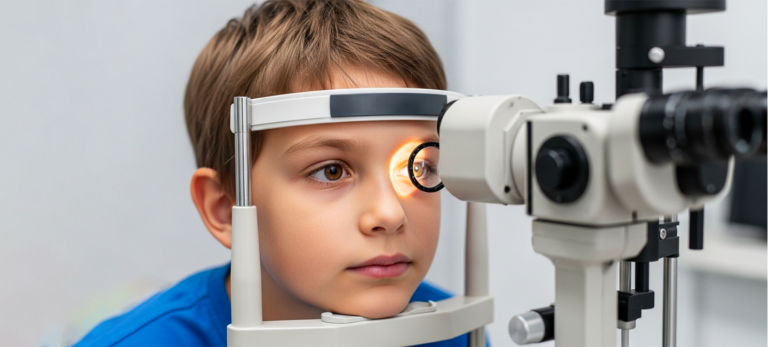A New Era of Eye Care How AI Smart Technology Are Revolutionizing Modern Eye Exams ? In today’s digital age, how we care for your eyes is evolving just as quickly as the world around us. At My Eye Care, we go beyond basic vision correction — we deliver precision, early detection, and personalized comfort …
A New Era of Eye Care
How AI Smart Technology Are Revolutionizing Modern Eye Exams ? In today’s digital age, how we care for your eyes is evolving just as quickly as the world around us. At My Eye Care, we go beyond basic vision correction — we deliver precision, early detection, and personalized comfort through the power of AI & smart technology in eye exams.
Modern advancements like artificial intelligence, high-resolution digital imaging, and intelligent diagnostic tools are no longer futuristic luxuries. They’re now essential for detecting, monitoring, and treating eye conditions before they become serious.
So what does that mean for you? This guide explains how AI-driven eye care works, why it matters, and what you can expect when you schedule your next exam at My Eye Care.
1. What Is AI in Eye Care?
At its core, AI in eye care refers to the use of computer-based algorithms that analyse large volumes of eye-images, patient data and treatment outcomes to assist clinicians in:
- Screening for diseases (for example, analysing retina scans for signs of diabetic retinopathy or glaucoma)
- Diagnosing earlier than would otherwise be possible
- Predicting progression of disease (so treatment can be proactive, not reactive)
- Streamlining workflows (faster results, fewer manual steps)
For example, programs such as the Stanford Teleophthalmology Autonomous Testing and Universal Screening (STATUS) programme—which uses AI-enabled cameras for diabetic patients to get their annual eye exam (without a separate ophthalmologist appointment)—demonstrate how AI is already being integrated into mainstream eye-care.
Another piece of research states: “AI in ophthalmology is already changing eye care … tools may eventually be used to help people with a number of eye conditions including diabetic retinopathy.”
In practical terms, at My Eye Care this means your exam may involve: high-resolution digital imaging of the retina, analysis using AI-tools for subtle changes, and real-time data to inform your doctor’s recommendations. It doesn’t replace the doctor — it empowers them.
Sources:
2. Why This Matters: Benefits of Smart Eye Exams
Early Detection & Improved Outcomes
- Globally, an estimated 2.2 billion people live with some form of vision impairment, and at least 1 billion of those could have been prevented or are yet to be addressed.
- AI-enabled or digital retinal screening programs have shown high accuracy. For instance, a meta-analysis of teleretinal screening found a sensitivity of 0.91 and specificity of 0.88 for detection of any level of diabetic retinopathy (n=7,207).
- Tele-ophthalmology / remote screening can improve screening rates and reduce costs in underserved areas.
Source:
More Accurate Prescriptions & Diagnostics
- Digital refractors and imaging systems reduce guesswork, enable quantitative measurement, and can more precisely tailor care plans.
- The global digital retinal imaging market is growing robustly: one report notes the market is expanding significantly, with rising prevalence of retinal disease and adoption of AI tools as key drivers.
Faster, More Comfortable Appointments
- AI and smart imaging reduce the number of repeat scans or manual adjustments. For example, one new technique in retinal imaging reduced the need for technician adjustments by scanning a larger focus range.
- Patients benefit from less waiting, more clarity about what is happening, and a smoother experience.
Personalised Care Plans
- With advanced imaging and data analysis, your eye-care provider can tailor monitoring, preventive strategies and follow-up much more tightly to you (age, family history, lifestyle) rather than a “one-size-fits-all” model.
- AI can assist not only in detection but also in workflow (for example scheduling, coding) and clinic efficiency.
Source:
3. How Smart Technology Improves Comfort and Confidence for Patients
Traditional eye-exams often feel routine: eye chart, lens flips, maybe dilation. With modern tech, we aim to add these improvements:
- Visualisation: You and your doctor can review high-resolution retina scans together, and you’ll see what they see. This helps you understand the findings and the rationale for recommendations.
- Less guess-work: The more advanced the imaging/AI, the less the “I’ll try this lens and see how you like it” uncertainty.
- Better tracking over time: If we’ve stored your baseline images digitally, we can compare future scans more precisely — providing early signals if things change (which is especially valuable for progressive conditions like glaucoma or diabetic retinopathy).
- Time-savings: Fewer repeat scans, fewer surprises, fewer referrals that come too late. For busy patients (children, seniors) this is a big advantage.
At My Eye Care, you’ll experience exams in a comfortable environment using modern equipment — but delivered with compassion. We believe technology shouldn’t replace care, it should enhance it.
4. The Future of Vision Health & What It Means for You
Technology continues to evolve — and it’s worth noting some of the trends so you can be confident that when you choose My Eye Care, you’re making a forward-looking choice.
- Predictive Analytics: AI is increasingly being used not just for diagnosing existing conditions, but predicting risk. For example, retinal scans combined with deep learning have been explored to predict cardiovascular disease risk.
- Expanded Screening Access: Hand-held devices and portable cameras combined with AI are allowing screening even in remote settings. For example: a portable fundus camera with AI recently got FDA clearance to detect eye conditions in less than a minute.
- Automation-Integrated Clinics: Beyond imaging, AI is entering scheduling, billing, triage and patient communication. According to the American Optometric Association, AI will help suggest diagnoses and treatment pathways, optimize flow and support practitioners.
- Wider adoption of OCT & advanced imaging: Modalities such as optical coherence tomography (OCT) are becoming more commonplace in clinics, allowing earlier detection of retinal and optic nerve changes. Advances in resolution and field-of-view continue.
What this means for you:
- Your next eye exam could detect changes even before you notice symptoms.
- Personalized follow-up may mean fewer unnecessary visits or more timely interventions.
- You’ll benefit from the latest in eye-care technology, delivered with the human touch.
Sources:
5. How This Fits at My Eye Care
At My Eye Care, we’ve built our practice around the belief that eye-health is more than seeing clearly — it’s living fully. Here’s how the technology fits with our mission:
- Comprehensive Exams: Whether you’re an adult, a child or managing a condition like diabetes, our exams integrate modern imaging and diagnostics.
- Pediatric & Myopia Control: For younger patients, early screening and monitoring means better long-term outcomes, especially with the increasing prevalence of myopia in children.
- Digital Imaging & AI Screening: Our facility uses digital retinal imaging and partners with systems that are informed by AI-capabilities. This supports early detection of conditions such as diabetic retinopathy, glaucoma and macular degeneration.
- Patient-Education & Transparency: After your scan, we’ll show you what the results mean, what our recommendation is, and how you can take proactive steps (lifestyle, monitoring, follow-up).
- Continuous Improvement: We stay updated on the latest clinical research, emerging tech, and best-practice guidelines to ensure you get care aligned with current standards.
6. Why You Should Book an Exam Now
- Even if you feel your vision is fine, changes can occur silently — early detection works.
- If you haven’t had a comprehensive eye exam in a year (or more, depending on your age/risk), this is a great time.
- If you have conditions like diabetes, high blood pressure, family-history of glaucoma, or use screens heavily — technological screening gives you an edge.
- Give yourself peace of mind: precise imaging + expert interpretation = clearer knowledge about your eye health.
See Clearly, Live Fully: Your Smart Eye Exam Starts Here
Smart technology is no longer the future of eye care — it’s the now. From earlier detection and personalized care to faster, more comfortable exams, AI-powered diagnostics are setting new standards in vision health. At My Eye Care, we believe your eyes deserve more than routine care — they deserve precision, insight, and compassion.
Why wait? Whether you’re managing a condition or just due for your next check-up, now is the time to benefit from the most advanced eye care tools available.
- Experience faster exams
- Get earlier insights
- Enjoy personalized, data-driven care
- Feel confident with clear visuals and doctor explanations
At My Eye Care, we help patients find the perfect balance between modern life and lifelong eye health.
Ready for relief? Book your digital eye health check today.
Read more about:
Digital Eye Strain & Blue Light Protection
Frequently Asked Questions
1. What is an AI-powered eye exam?
An AI-powered eye exam uses artificial intelligence to analyze detailed images of your retina and other eye structures. The AI system detects early signs of diseases such as glaucoma, macular degeneration, and diabetic retinopathy — often before symptoms appear. It helps eye doctors make faster and more accurate diagnoses.
2. How accurate is AI in detecting eye diseases?
According to a 2023 BMJ Ophthalmology study, AI screening systems for diabetic retinopathy achieved 91% sensitivity and 88% specificity, meaning they correctly identify most true cases and avoid false alarms. That makes AI one of the most reliable early-detection tools in modern eye care
Source:
3. Can AI eye exams replace a human optometrist?
No — AI assists, but does not replace, your optometrist. It rapidly analyzes images and data, flagging potential issues, while your doctor interprets results, confirms diagnoses, and designs your personalized treatment plan. AI enhances accuracy, but human expertise remains essential.
4. How does smart technology make eye exams faster?
Smart diagnostic tools automate imaging and data analysis, reducing exam time by up to 30–40% compared to manual methods. AI quickly processes retinal scans, and digital refraction systems automatically adjust lenses, minimizing repetitive steps and improving comfort.
5. What eye diseases can AI detect early?
AI tools can detect early signs of:
- Diabetic retinopathy
- Glaucoma
- Age-related macular degeneration (AMD)
- Keratoconus and corneal irregularities
- Cataract progression
Studies show AI can identify diabetic retinopathy up to five years earlier than traditional screening.
6. Is AI technology safe for patient data?
Yes. AI platforms used in clinics like My Eye Care are HIPAA-compliant, encrypted, and regulated by the FDA. All medical imaging data stays secure and confidential within protected healthcare systems, ensuring full privacy protection.
7. How often should I get an AI-based eye exam?
Most adults should have a comprehensive eye exam once every 1–2 years, depending on age and risk factors. If you have diabetes, hypertension, or family history of glaucoma, annual AI-supported screenings help catch changes early and track progression accurately.
8. What’s the difference between digital retinal imaging and a traditional eye exam?
A digital retinal exam captures high-resolution images of the back of your eye (the retina), while a traditional exam relies on direct visualization through the pupil.
AI then analyzes the digital images for micro-changes invisible to the naked eye — enabling earlier intervention and better long-term outcomes.
9. How is AI used for children’s eye care and myopia control?
AI helps track eye-growth patterns, detect early myopia progression, and guide treatments like Ortho-K and MiSight lenses. Since childhood myopia rates are expected to affect over 50% of the global population by 2050, early detection through AI imaging is critical.
10. Why choose My Eye Care for AI-based eye exams?
At My Eye Care, you get:
- AI-supported early disease detection
- Digital imaging and personalized results
- Pediatric and diabetic eye management
- Insurance-friendly and flexible financing
- Compassionate, family-focused care





